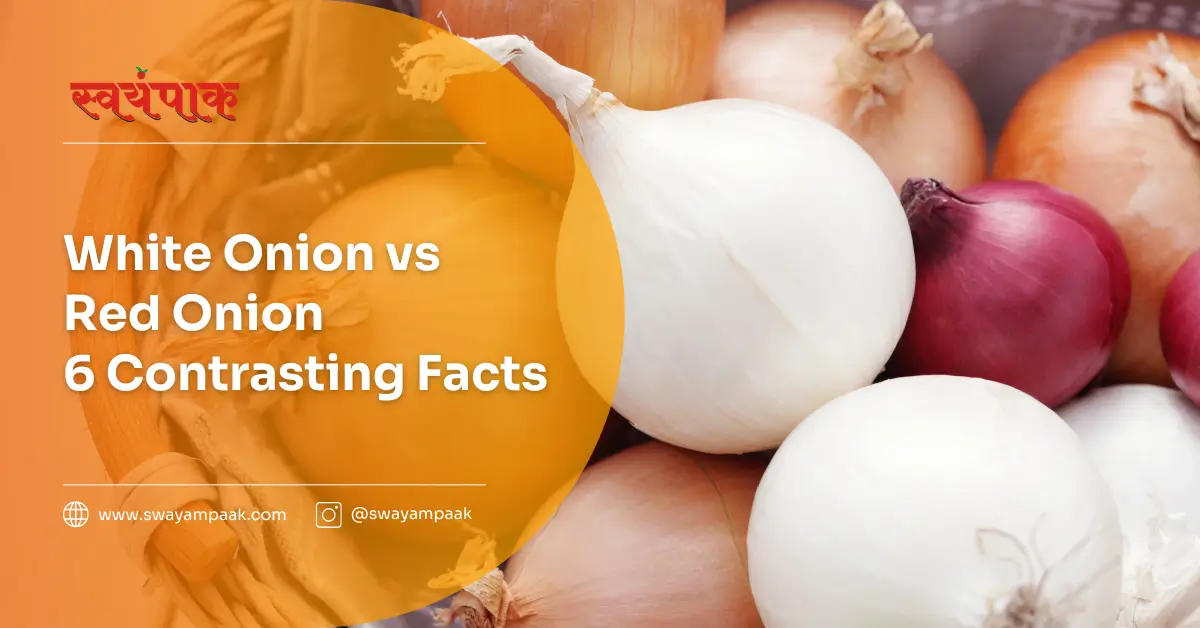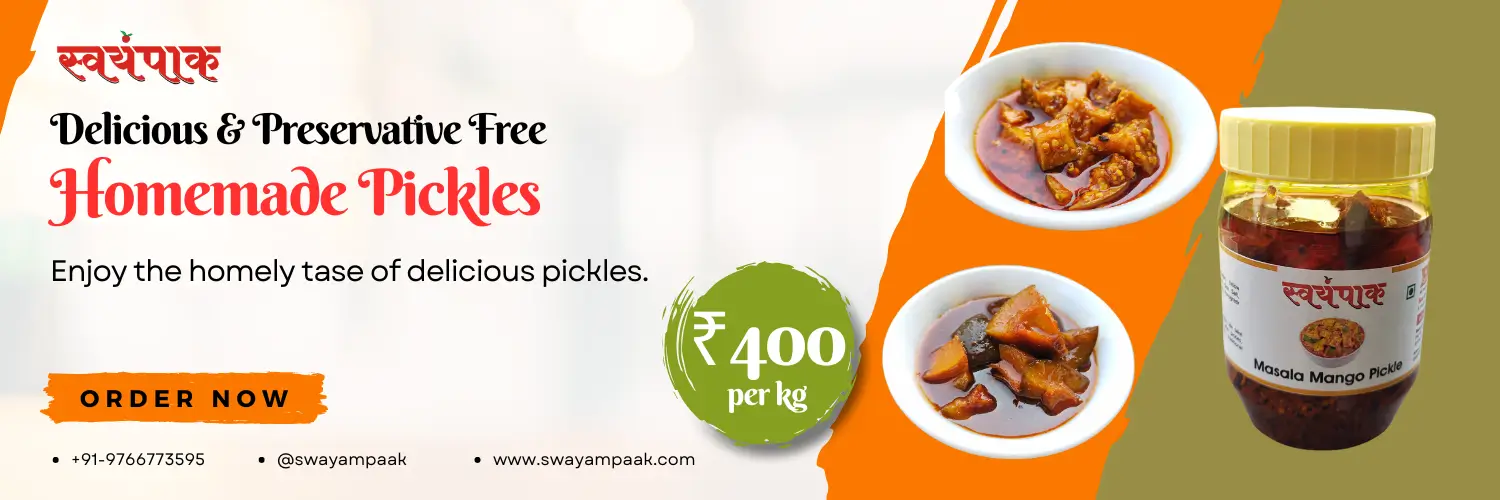Onions. A kitchen staple, a tear-jerker, and a flavour booster extraordinaire. But within the humble onion family, a battle rages on! In one corner, the mild-mannered white onion, a culinary workhorse. In the other, the vibrant red onion, adds a burst of colour and a touch of spice.
So, which reigns supreme? Are you Team White for its versatility, or Team Red for its fiery flair?
In this blog white onion vs red onion, we will peel back the layers and explore the fascinating world of white vs red onions. We’ll uncover their unique flavours, ideal uses, and surprising health benefits. By the end, you’ll be a certified onion connoisseur, ready to confidently tackle any recipe!
White Onion vs Red Onion
Onions: The Unsung Heroes of Culinary Artistry
From the sizzle of a pan to the crunch in a salad, onions reign supreme as the unsung heroes of the culinary world. These humble bulbs, with their layers of flavour and versatility, have been elevating dishes across cultures and cuisines for millennia. They possess an almost alchemical ability to transform – from tear-inducing raw pungency to meltingly sweet caramelized perfection.
In the vast kingdom of alliums, two contenders stand out, each vying for the crown of kitchen supremacy: the classic white onion and its more flamboyant cousin, the red onion. These culinary titans, while sharing a familial bond, bring distinct personalities to the plate.
The Great Onion Debate: White Onion vs Red Onion
Picture a chef’s kitchen, where a heated discussion unfolds. On one side, devotees of the white onion extol its virtues – its sharp clarity of flavour, and its unparalleled ability to melt into the background of a dish while simultaneously lifting it to new heights. On the other, champions of the red onion argue passionately for its vibrant beauty, its complex sweetness, and its ability to shine in both raw and cooked applications.
This is not merely a battle of colour, but a clash of culinary philosophies. The white onion, with its no-nonsense approach, represents the foundation of countless classic dishes. The red onion, with its eye-catching hue and nuanced flavour profile, embodies a more modern, visually-driven culinary aesthetic.
As we delve deeper into this aromatic arena, we’ll peel back the layers (pun fully intended) of these two allium gladiators. We’ll explore their unique characteristics, from appearance to flavour, and uncover the secrets that make each variety shine in different culinary applications.
So, sharpen your knives and prepare your taste buds. Whether you’re a seasoned chef or a curious home cook, this journey through the world of onions promises to be an eye-opening (and perhaps slightly tear-inducing) adventure. By the end, you’ll have a newfound appreciation for these indispensable ingredients and the power they wield in transforming ordinary meals into extraordinary culinary experiences.
Let the great onion debate begin!
The White Onion
Mild and mellow, white onions are the ultimate kitchen workhorses. Their neutral flavour makes them perfect for caramelizing, adding sweetness to broths, or forming the base for savoury sauces. They also excel when raw, lending a gentle bite to salads and salsas. Their versatility allows them to shine in everything from French onion soup to creamy dips.
The Red Onion
Red onions bring a vibrant pop of colour and a touch of spice to the party. Their flavour packs a slightly peppery punch, making them ideal for dishes seeking a bolder taste. Think grilled meats, tacos, and chunky salsas. They also hold their own when raw, adding a delightful crunch to salads and burgers. Plus, their beautiful red hue adds a decorative touch to any dish.
Unveiling the White Onion vs Red Onion Debate
Onions are like the supporting actors in the grand play of cooking. Often overlooked, they play a vital role in building flavour profiles. From caramelized masterpieces that add depth to savoury dishes to the refreshing crunch that brightens salads, onions are a true kitchen essential.
But within the onion family, a friendly competition exists. Today, we’ll be dissecting the distinct personalities of white and red onions to help you choose the perfect ingredient for your culinary creations.
So, buckle up, food enthusiasts! We’re diving deep into the world of white vs red onions. We’ll explore their unique flavour profiles, ideal uses, and surprising health benefits. By the end of this flavourful journey, you’ll be a certified onion connoisseur, ready to elevate your cooking game to a whole new level.
Unveiling The Tale of Two Colours
Appearance:
White Onions: The Understated Classic
- Smooth, papery outer skin in pristine white or off-white
- Layers of pearly white flesh beneath
- Abundant, uniform layers ideal for slicing and dicing
Red Onions: Nature’s Jewel
- Vibrant reddish-purple skin with captivating colour variations
- Flesh reveals a gradient of pinkish-red hues
- Visually striking, adding a pop of colour to dishes
Flavour Profiles:
White Onions: The Bold Performer
- Sharp, pungent flavour with a crisp bite
- Assertive when raw, mellowing beautifully when cooked
- Ideal for:
- Caramelizing (burgers, soups)
- Adding depth to savoury dishes
- Providing texture in salads and slaws
- Caution: Can overpower delicate flavours when raw
Red Onions: The Subtle Charmer
- Milder taste with a hint of sweetness and peppery notes
- Juicy texture perfect for raw applications
- Excels in:
- Salsas and fresh preparations
- Adding crunch to sandwiches and burgers
- Providing a balanced onion flavour without dominating
- Note: Less ideal for deep caramelization
White Onion vs Red Onion: A Nutritional Showdown
Let’s explore the vitamins, minerals, and unique benefits each brings to the table.
| Characteristic | White Onion | Red Onion |
|---|---|---|
| Color | White skin and flesh | Red or purple skin with white flesh tinged with red |
| Flavor | Mild, sweet | Sharp, spicy |
| Texture | Crisp and juicy | Crisp and crunchy |
| Usage | Raw in salads, salsas, and sandwiches; cooked in soups and sauces | Raw in salads, burgers, and sandwiches; grilled, roasted, or pickled |
| Availability | Widely available year-round | Widely available year-round |
| Shelf Life | Shorter shelf life; best used fresh | Longer shelf life; can be stored for weeks |
| Calories | 42 calories per 100g | 40 calories per 100g |
| Carbohydrates | 10g per 100g | 9g per 100g |
| Sugars | 4g per 100g | 4g per 100g |
| Fiber | 1g per 100g | 2g per 100g |
| Vitamin C | 7% of Daily Value (DV) per 100g | 10% of Daily Value (DV) per 100g |
| Antioxidants | Lower levels compared to red onions | Higher levels of anthocyanins and quercetin |
The Onion Odyssey: White onion vs Red onion
Nutritional Powerhouses:
White onions, though less visually striking, are nutritional titans. Rich in vitamin C, they bolster immune function and promote skin health. They’re also packed with B vitamins, crucial for energy metabolism, and minerals like potassium and chromium, supporting cardiovascular and metabolic health.
Red onions, with their vibrant hue, are antioxidant champions. Their distinctive colour comes from anthocyanins, which may reduce inflammation and heart disease risk. They rival white onions in vitamin C content and potentially surpass them in quercetin, an antioxidant with anti-inflammatory properties.
Culinary Strengths:
White onions truly shine when heat-treated. Their high sugar content makes them ideal for caramelization, transforming them into sweet, richly flavoured delights. They excel in cooked dishes, forming the backbone of savoury sauces, soups, and stews.
Red onions are the darlings of raw preparations. Their crisp texture and slightly sweet, peppery flavour make them stars in salads, slaws, and sandwiches. Their striking colour adds visual appeal to various dishes, from tacos to pizzas.
Cooking Techniques:
White onions thrive under heat:
- Sautéing: Creates a sweet, savoury base for countless dishes.
- Caramelizing: Slow cooking unleashes intense sweetness and depth.
- Sweating: Yields a mild, moist foundation for delicate preparations.
Red onions excel in raw applications:
- Slicing for salads: Adds crunch and peppery bite.
- Grilling: Enhances natural sweetness while maintaining texture.
- Pickling: Creates a tangy, colourful condiment.
Cultural Significance:
White onions are pillars of Western cuisine, starring in American comfort foods and European classics like French onion soup and Swiss fondue.
Red onions bring vibrancy to Mediterranean and Latin American dishes, from Greek salads to fresh salsas and pickled condiments.
In essence, both white and red onions offer unique nutritional benefits and culinary applications. White onions excel in cooked dishes, while red onions shine in raw preparations. Their distinct profiles make them invaluable in various culinary traditions, each bringing its own flavour, texture, and visual appeal to the table.
Conclusion
While both white and red onions are kitchen workhorses, they each bring distinct personalities to the table. White onions reign supreme for their caramelizing prowess, adding depth to savoury dishes. Their mild flavour makes them versatile, at home in everything from soups to salads. Red onions, with their vibrant colour and touch of peppery bite, shine raw in salsas and salads, while grilling unlocks their natural sweetness.
Both offer a surprising amount of vitamins and antioxidants. White onions boast B vitamins and potassium, while red onions champion anthocyanins. Ultimately, the best choice depends on your desired flavour and the recipe. So, grab your favourite onion and get cooking – a delicious adventure awaits!


